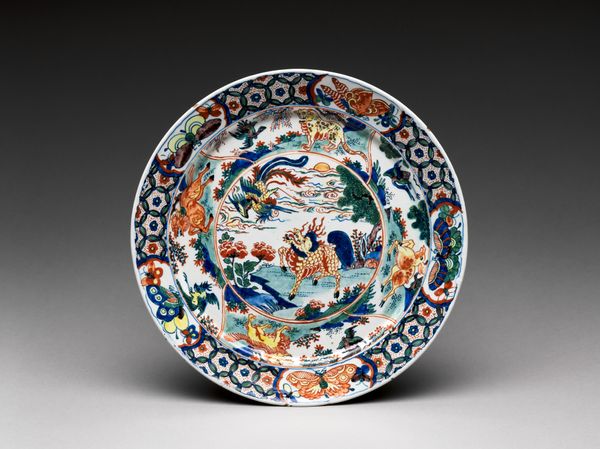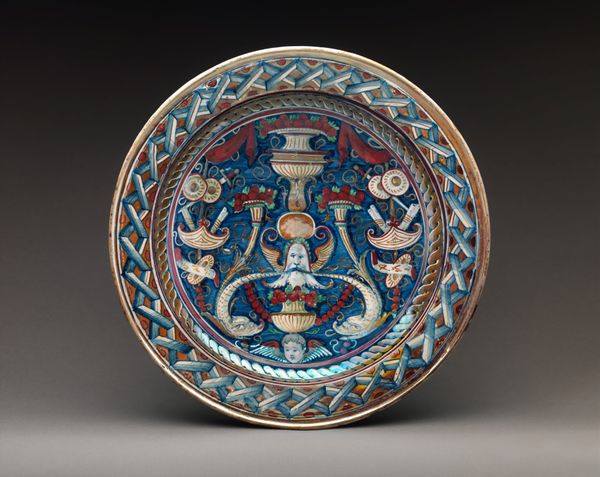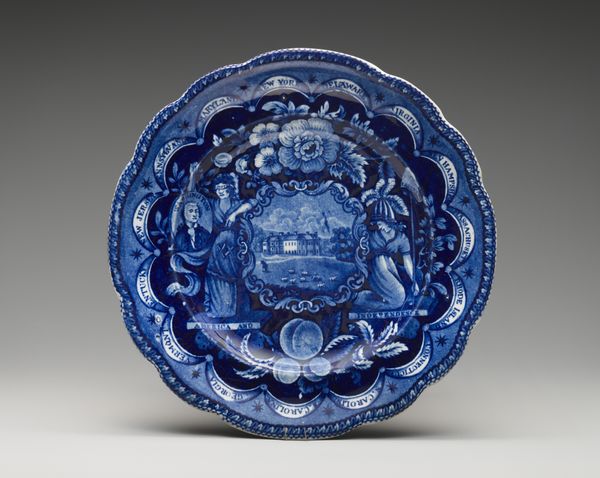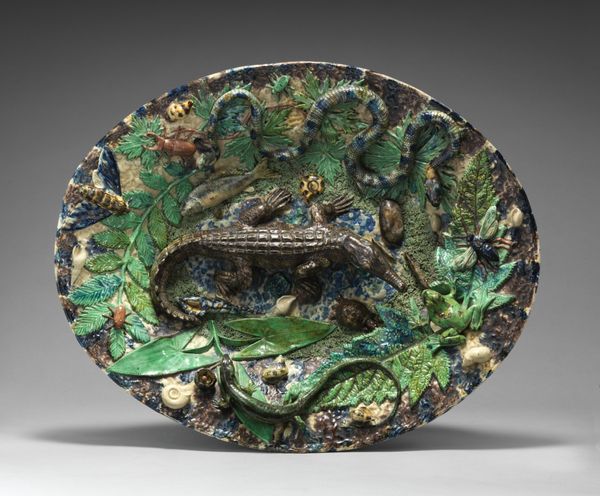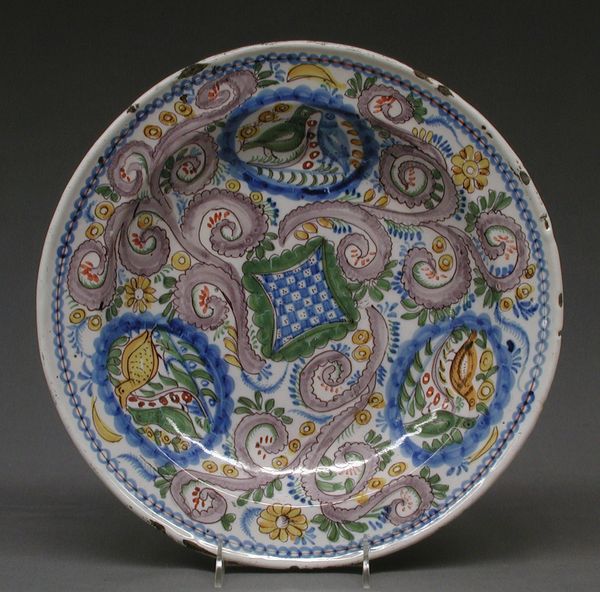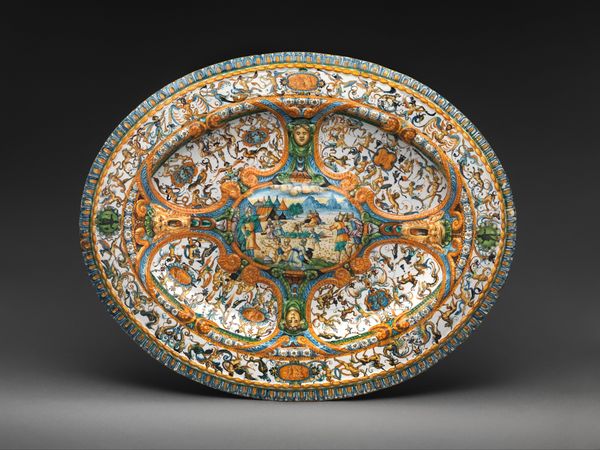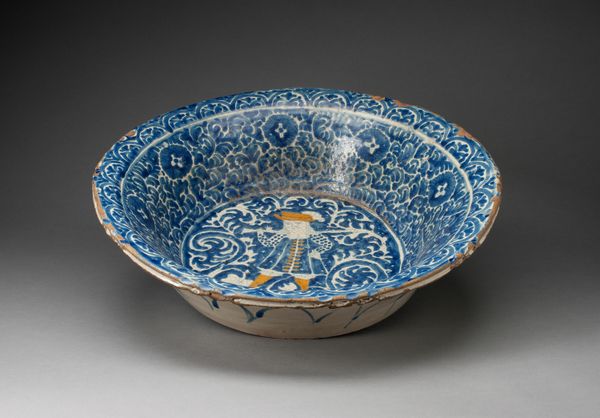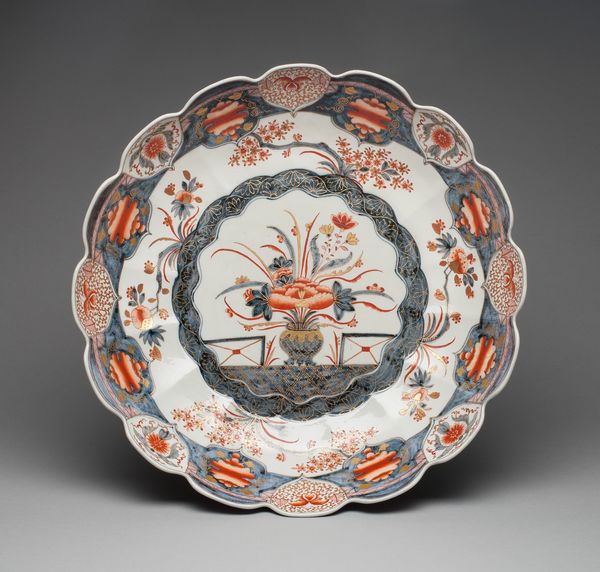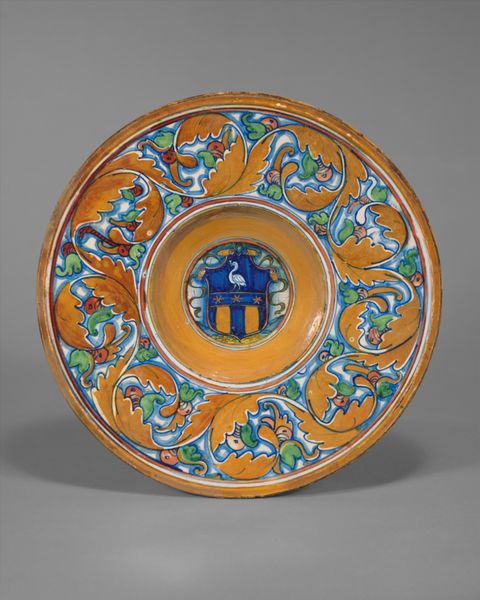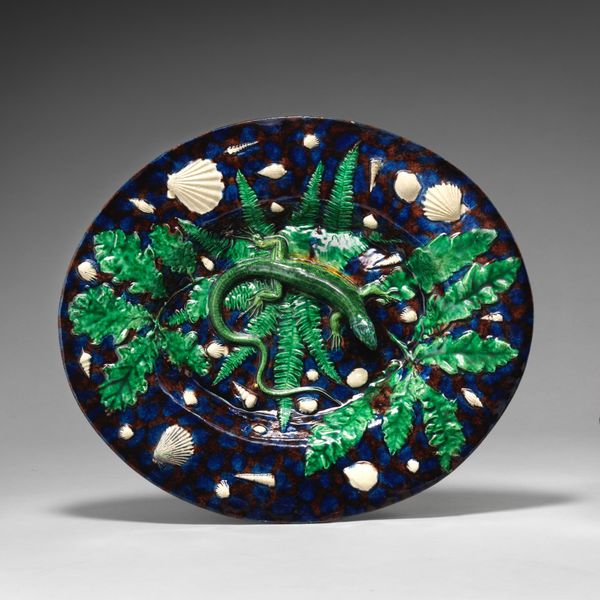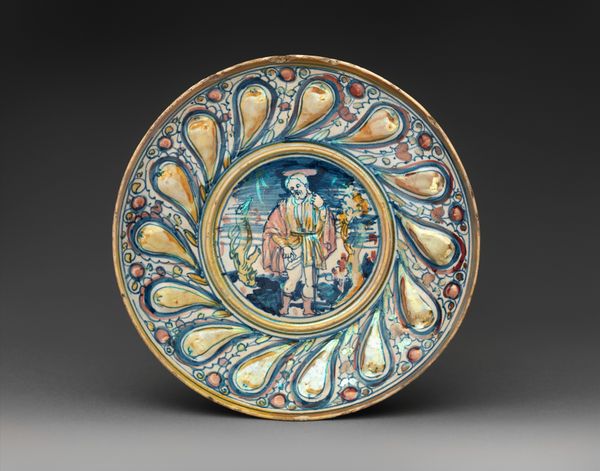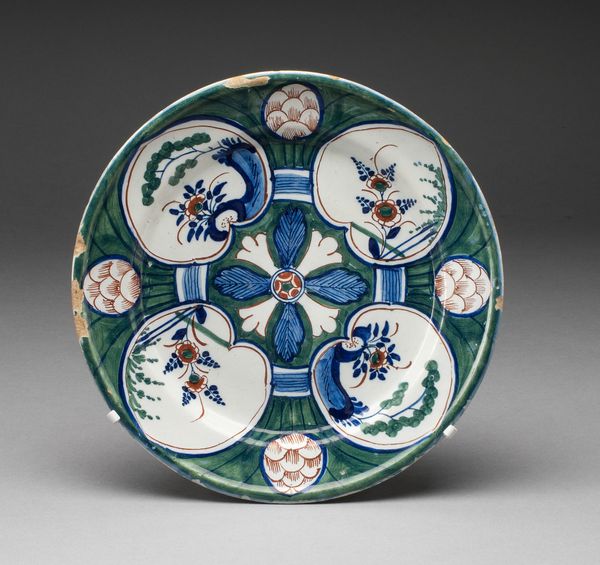
relief, ceramic, terracotta
#
relief
#
ceramic
#
mannerism
#
11_renaissance
#
ceramic
#
food art
#
terracotta
#
nature
Dimensions: 41.3 × 50.8 × 7.6 cm (16 1/4 × 20 × 3 in.)
Copyright: Public Domain
Curator: What first strikes me about this ceramic platter, crafted around the 17th century, is the overwhelming sense of contained wilderness. The relief work creates a miniature ecosystem, teeming with life. Editor: Absolutely. It's Bernard Palissy's "Platter," currently residing at The Art Institute of Chicago, and when I first saw it, I thought, "obsessive." All those precisely rendered shells, fish, plants – it feels like a scientist's meticulous collection transformed into…dinnerware? Curator: Well, it’s more than dinnerware, I believe! Palissy, driven by his scientific curiosity, sought to replicate nature in his art. He wasn’t merely decorating; he was documenting. These aren't just random decorations, are emblems of the natural world he was observing so keenly during the Renaissance. Editor: Right, right. It’s just, what strikes me now is that the fish around that swirling eddy remind me of an ancient symbol... the uroboros, or a serpent biting its own tail, reflecting nature’s endless cycles, and it makes me think, "Was Palissy ahead of his time?" Because food art becomes so interesting during the futurist era. Curator: Perhaps subconsciously, yes. Consider that Mannerism, the dominant style then, relished in complexity and artifice. Palissy masterfully blended meticulous realism with the theatricality of the period. Think about courtly entertainments of the time, or cabinets of curiosities where specimens of flora and fauna were presented, discussed, and put on display. It makes the natural world itself, or, an idealized form of it, into something collectible. Editor: Do you think he felt restricted? You know, by working within the confines of a plate? Curator: I wouldn’t say "restricted." Consider it more of a contained meditation. The circular form emphasizes the self-contained nature of this small world, the deep blues evoking an almost cosmic backdrop. The labor involved would have been immense and highly artisanal, turning the humblest of material - clay - into an almost precious artwork. Palissy was alchemizing reality through artistry. Editor: Right! Palissy isn't simply showing us nature; he is reshaping the narrative. He wants us to reconsider our position within this intricate, natural scheme. Fascinating. I never would've considered any of this the first time I glanced over the piece. Curator: It invites contemplation, doesn't it? It pulls you into its miniature world of minute artistry, which helps me better understand our relationship to the bigger, natural world.
Comments
No comments
Be the first to comment and join the conversation on the ultimate creative platform.

